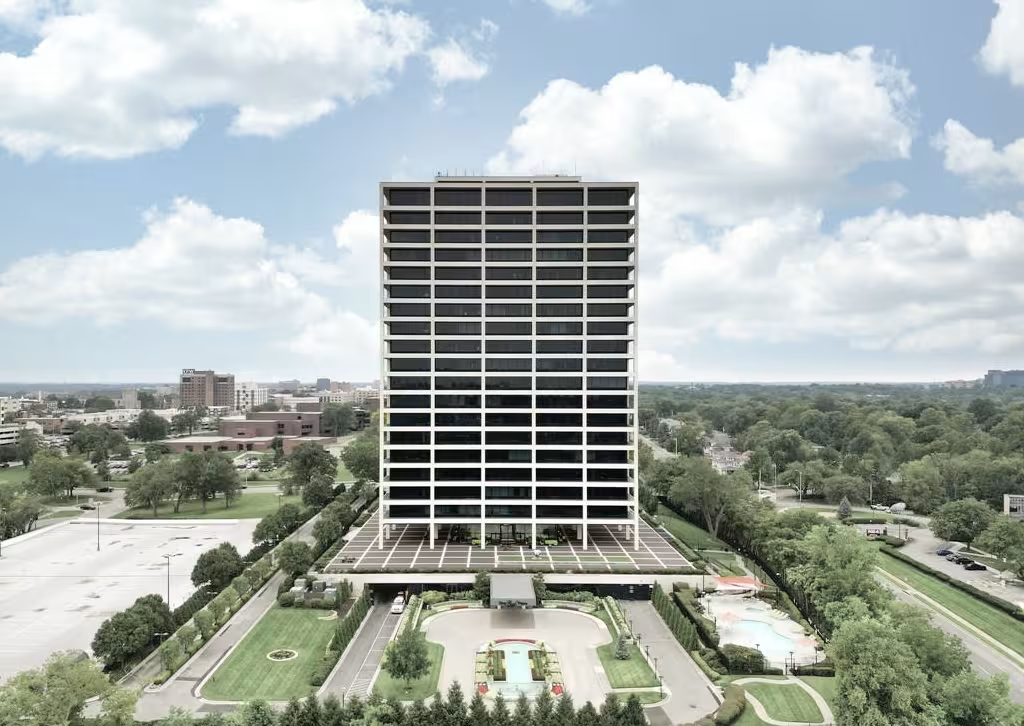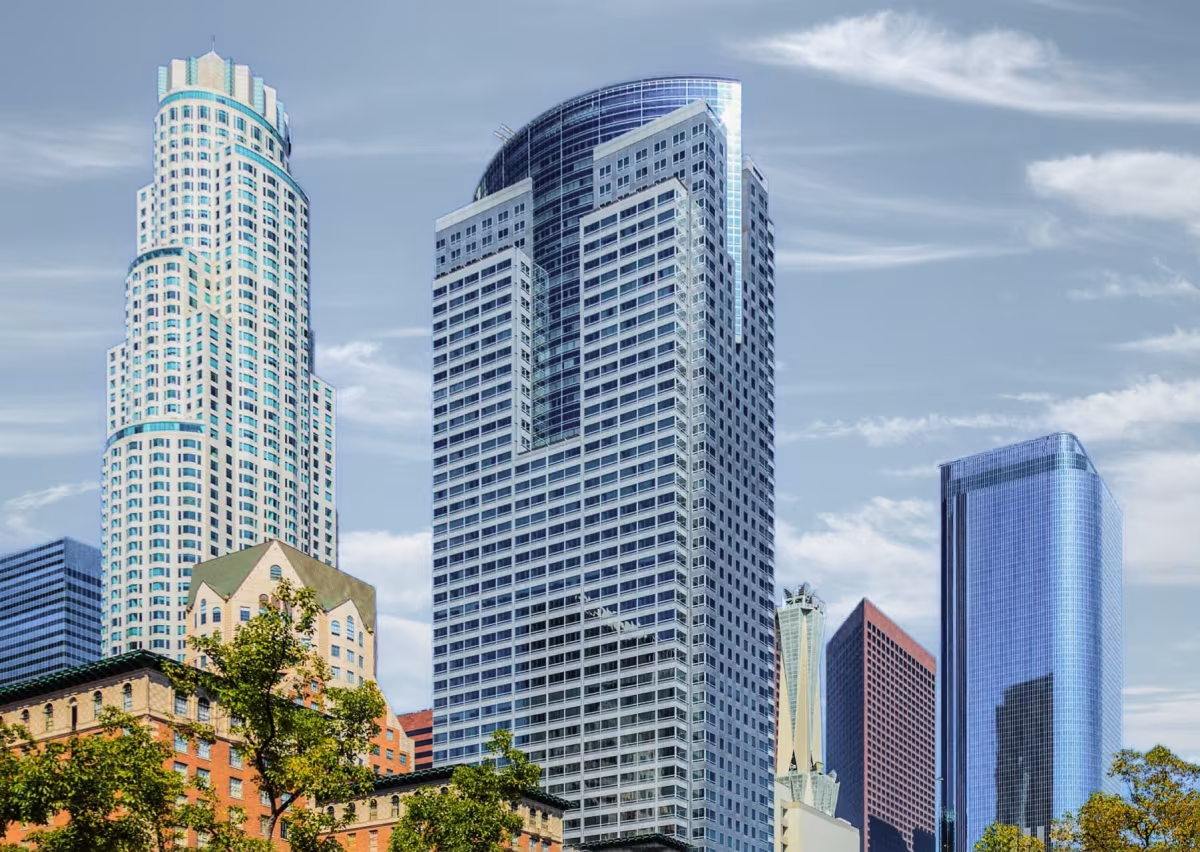BMA Tower vs Gas Company Tower


Comparing the BMA Tower and the Gas Company Tower is compelling because they were both designed by Skidmore, Owings & Merrill, yet they stand in different cities (Kansas City, MO and Los Angeles, CA), and were completed over two decades apart.
What this will allow us to see, is how the same firm's approach adapted to different places in different periods of time.
Height & Size
The Gas Company Tower is clearly the larger tower of the two, both in terms of height and number of floors. It rises to 748ft (228m) with 52 floors above ground, while the BMA Tower reaches 272ft (83m) with 19 floors above ground.
Gas Company Tower also offers more total built-up area, a total fo 1,781,748 sqf (165,530m2), which is about 1,397,746 sqf (129,855m2) more than what the BMA Tower offers.
Of course, each project may have faced different briefs or regulatory constraints, which we don't really know about and could also explain the outcome.
Architectural Style
The BMA Tower was designed in the International Style style, while the Gas Company Tower reflects the principles of Postmodernism.
The Gas Company Tower represents a late expression of the Postmodernism, a style already in decline in 1991 when it was completed. By contrast, the BMA Tower followed the then mainstream International Style, embodying the dominant architectural direction of its time.
With 28 years between them, the comparison also reflects how quickly architectural priorities can shift from one dominant language to another.
Uses
The BMA Tower is primarily residential, while the Gas Company Tower is primarily commercial.
Originally, the BMA Tower was designed for commercial, but over time it was converted to residential. The Gas Company Tower by contrast has maintained its original role.
The BMA Tower offers 106 residential units.
Structure & Facade
Both towers share the same structural solution, a Frame system.
A frame structure uses a grid of columns and beams to carry the building's loads. This frees the walls from structural duties, allowing for flexible floor plans and larger windows.
However, when it comes to the facade, both buildings use different approaches. The BMA Tower uses a Window Wall facade, while the Gas Company Tower uses a Curtain Wall facade.
A Window Wall facade like the one seen in the BMA Tower uses panels fitted between floor slabs, leaving slab edges visible, while a curtain-wall facade like the one seen in the Gas Company Tower uses a lightweight glass curtain wall hung from the structure.
| BMA Tower | Gas Company Tower | |
|---|---|---|
| Skidmore, Owings & Merrill | Architect | Skidmore, Owings & Merrill |
| 1961 | Construction Started | 1988 |
| 1963 | Year Completed | 1991 |
| International Style | Architectural Style | Postmodernism |
| Residential | Current Use | Commercial |
| 19 | Floors Above Ground | 52 |
| 83 m | Height (m) | 228 m |
| 35675 | Built-up Area (m²) | 165530 |
| Frame | Structure Type | Frame |
| Steel | Vertical Structure Material | Steel |
| Concrete And Steel | Horizontal Structure Material | Concrete |
| Yes | Facade Structural? | No |
| Marble, Glass | Main Facade Material | Glass, Steel |
| MO | State | CA |
| Kansas City | City | Los Angeles |
| 700 W 31st Street | Address | 555 West 5th Street |